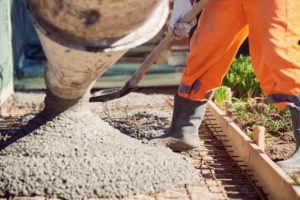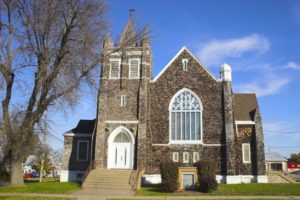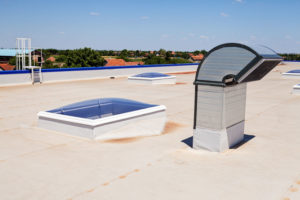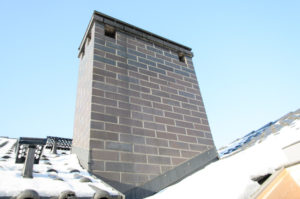Category: Uncategorized
Signs Your Concrete Needs To Be Restored
In the past, concrete was considered an “indestructible” material. This belief has led many builders and designers to ignore the most basic rules to guarantee the durability of concrete structures. The result is that 20-30 years after construction, most of the concrete buildings show obvious signs of degradation, if they have not been maintained.
At present, the continuous increase of the construction costs makes it sometimes more advantageous to repair and consolidate the degraded concrete constructions, even if the degradation process has reached a rather advanced stage.
Causes of concrete degradation
The causes of the degradation are often favored by qualitative deficiencies of the concrete and are usually determined by the environmental conditions to which the building is exposed.
They can be divided into:
- Chemical
- Physical
- Aggression caused by freeze / thaw cycles
- Aggression caused by fire
- Mechanical
- Aggression caused by abrasion, erosion, tearing, overload and impact.
Normally, concrete deterioration progresses relatively slowly. In the initial phase, which could take quite some time, there are no visible signs on the concrete surface. However, in its structure, the carbonation process is already underway, to the point where the depth of neutralization reaches the reinforced steel and destroys the protective layer. Moreover, the products of this chemical reaction (e.g. rust) have a larger volume, which can cause cracks. In time, the concrete surface separates from the reinforcement and exposes the steel elements. From this moment, the entire structure becomes affected and it is very clear that the concrete needs to be restored by contractors involved with masonry restoration.
How to Keep Your Historic Building in Great Shape Without Changing It
A lot of the time, older buildings tend to start falling apart after a while. Even if the owner’s intentions are among the best, and they are investing a lot in minor repairs and extensive maintenance projects, the building might simply need something more.
Keeping your historic building’s legacy while making sure it can still stand proudly is one of those things that require precision and a significant amount of forethought.
Building restoration and commercial roofing Connecticut experts are typically the answer here. In most cases, they can help you transform your building and renew it without leading it to lose its historic identity. Masonry repair work, an extensive paint job, redoing the floors and walls and making sure the plumbing, wiring and heating systems are completely replaced with newer systems that can keep the building online more easily are among the top most important restoration methods that can work on your historic building.
Also, the great thing about hiring a building restoration contractor is that you can focus on restoring many of the artistic and unique, architectural aspects of the building. Statues, stone carvings and unique exterior finishes can be repaired and enhanced to withstand the test of time for a much longer period than one would have previously thought possible.
How Can You Tell It’s Time for a Building Restoration Project?
Building restoration can be pretty big in most cases. If your building is old or damaged, then it might be time to consider whether or not you need to have it restored and to have various parts of it repaired.
One of the main thing that most experts are concerned about is if the building is behind the times when it comes to building codes and standards. For example, when it was deemed that copper wiring would be a safer and more efficient choice compared to the old aluminum wiring systems, a lot of older buildings were restored and the wiring was changed completely.
Of course, drastic changes are not the only ones that warrant building restoration projects. It’s also possible that your building sustained heavy damage during a storm, a fire or a hurricane. In such cases, building restoration is in fact a must, and you might get away from some of the expenses by calling on your insurer.
Additionally, building restoration might simply be required to fix damaged masonry and redo the finishes or repaint the entire structure. Such a makeover is typically for show, but it can also add to the marketing value of your company, especially if you just bought the building from another firm or investor, and you want to personalize it to suit your business.
Signs the Storm Has Damaged Your Commercial Roof
Storms can damage roofs in many ways, but many forms of damage can be insidious, aggravating in an unnoticed way. It is not always obvious that the change that you have noticed on the roof surface has been caused by a storm, so here are some indicators that your commercial roof has, indeed, sustained storm damage:
- Pieces of roofing cover in the yard – storms can cause the covering material on your roof to break into pieces and the wind is likely to sweep those pieces off and drop them in your yard. If pieces of shingles, mortar, roof fastening nails or other materials that make up your roof appear in the yard, it is a sure sign that something bad has happened to your roof;
- Damp patches in the attic – if the storm has displaced any of your roof covering components, water has probably made its way into your attic, so you should look for damp patches or droplets of water where they shouldn’t be;
- Damaged roofing cover – bruised, buckling, curling shingles, shingles with the surface granules missing, dents and cracks on metal, chipped or cracked tiles are also signs to look for after storm;
- Damaged or sagging gutters and downspouts – storms are not gentle on the gutters either. Strong winds can tear off both the gutters and the spouts, while hail can cause dents and cracks. For damage to roof and gutters, call the professional roofers at http://www.nemasonry.com/new-england-roofing for great roofing services.
Protecting Your Masonry From The Weather
The Construction building restoration specialists agree that if it is not properly protected, a construction will require premature repairs – repairs for which the owner may pay considerable amounts of money, depending on the damaged elements.
In the case of a house under construction, the various uncovered structural elements, such as supporting pillars, must be protected to prevent rust and degradation. In addition, it is advisable that the walls be insulated with polystyrene as quickly as possible and protected with plastic foil. If no action is taken, the water will infiltrate between bricks, causing them to remain wet for many years.
In the case of a finished house, masonry has to be protected with adequate siding.
Most common types of siding
- Stucco
Typically a mixture of cement and sand, or cement and lime, Stucco is applied all over the house, to protect it from the elements. Stucco is versatile: simple or textured, allowing the application on any surface and in various shapes. It can also be painted in any color.
- Concrete
Concrete is obtained from cement, gravel, sand and water, mixed in various proportions. It hardens when dry and creates a durable home exterior.
- Vinyl
Vinyl is currently the most popular siding material due to its price, durability, low maintenance and versatility.
- Natural materials (wood, stone)
Very beautiful and resistant as siding materials, wood and stone add a sense of traditional charm to any home.






















